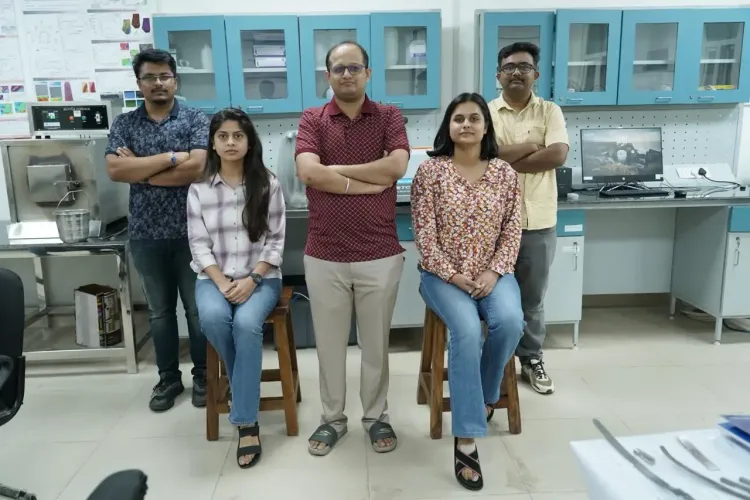How Did IIT Jodhpur Researchers Create an ‘Ultralight and Ultrastrong Supermetal’?

Synopsis
Key Takeaways
- TiAl-CA is an ultralight and ultrastrong Titanium–Aluminide alloy.
- The alloy retains strength at temperatures up to 900 °C.
- It weighs nearly half that of conventional superalloys.
- TiAl-CA is suitable for advanced 3D printing technologies.
- This innovation supports India's 'Make in India' initiative.
Jaipur, Oct 30 (NationPress) Researchers at the Indian Institute of Technology (IIT) Jodhpur have successfully developed a revolutionary Titanium–Aluminide (TiAl) alloy that is poised to change the landscape of materials utilized in aerospace and defense engineering.
The newly formulated alloy, known as TiAl-CA, tackles enduring challenges associated with producing lightweight but heat-resistant metals for jet engines — achieving an unmatched balance of ultra-low weight and outstanding high-temperature strength.
Traditional superalloys employed in aircraft engines are often either excessively heavy or lose their strength at elevated operating temperatures. The team from IIT Jodhpur, under the guidance of Prof. S. S. Nene along with PhD candidates A. R. Balpande and A. Dutta, has made significant strides in this field.
Dutta, part of the Advanced Materials Design and Processing Group in the Department of Materials Engineering, has adeptly developed TiAl-CA — a material that maintains gigapascal-level yield strength even at 900 °C while demonstrating excellent oxidation resistance.
What sets TiAl-CA apart is its absence of boron in its composition. Conventional high-strength TiAl alloys typically incorporate elements such as boron or carbon, which can lead to brittleness.
The IIT Jodhpur researchers addressed this challenge by integrating a refined combination of Niobium (Nb), Molybdenum (Mo), Tantalum (Ta), Tungsten (W), and Vanadium (V) into the TiAl matrix, resulting in a material that is robust, stable, and highly amenable to processing.
In terms of performance, TiAl-CA exhibits remarkable capabilities — achieving a yield strength of approximately 1.1 GPa at room temperature and retaining comparable strength at 900 °C.
Notably, it weighs nearly half as much as conventional Nickel-based superalloys (4.13 g/cc compared to 7.75–9.25 g/cc) while exceeding them in high-temperature compressive strength.
The advent of this ultralight yet ultra-strong alloy heralds a significant breakthrough for the aerospace and defense sectors, enabling the creation of fuel-efficient, lightweight aeroengine components, thereby contributing to a reduced carbon footprint.
The researchers are now focused on expanding their testing — including scaling up casting and evaluating creep and fatigue resistance — to move toward industrial applications.
Moreover, the alloy’s exceptional as-cast properties make it ideally suited for advanced fusion-based 3D printing technologies such as Electron Beam Melting (EBM) and Laser Powder Bed Fusion (LPBF), paving the way for innovative high-performance component manufacturing. This remarkable achievement underscores India’s emerging leadership in advanced materials research.
The TiAl-CA alloy exemplifies the country’s commitment to innovation under the ‘Make in India’ initiative, paving the path for next-generation aircraft and defense systems that are lighter, stronger, and proudly Made in India.









